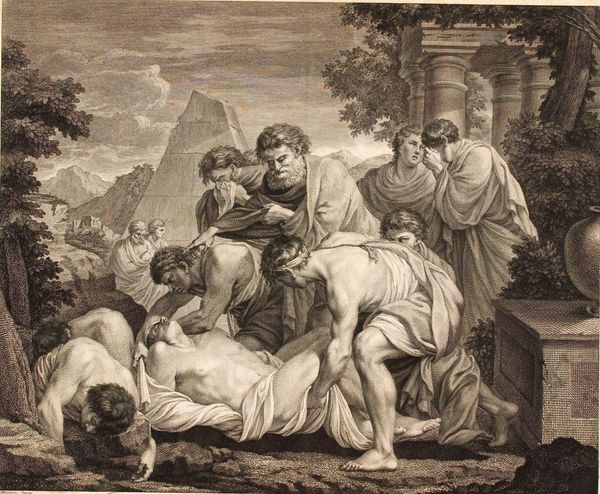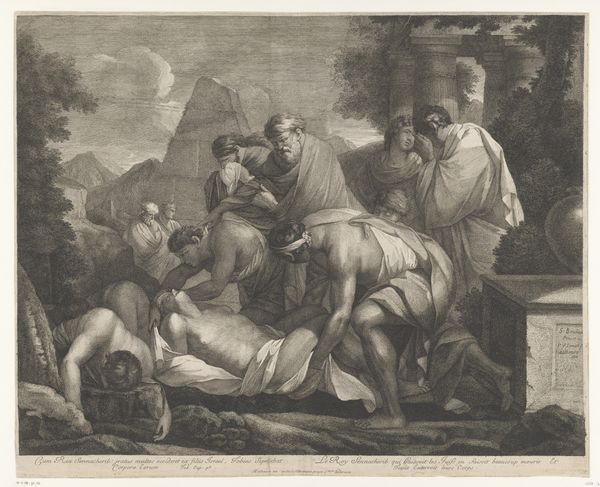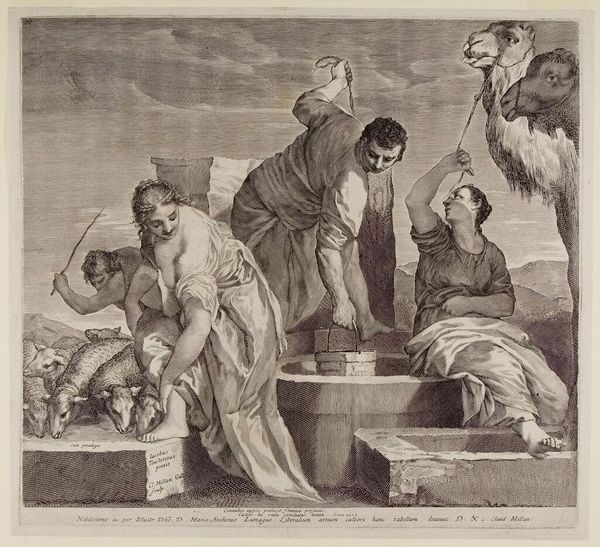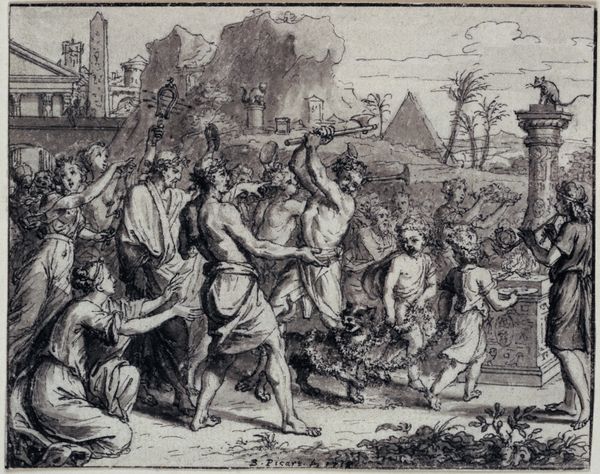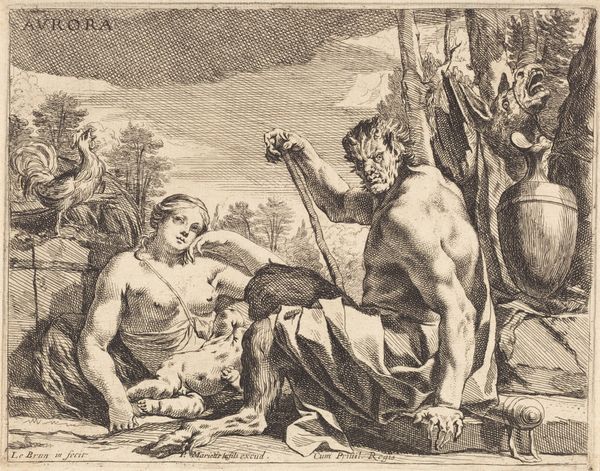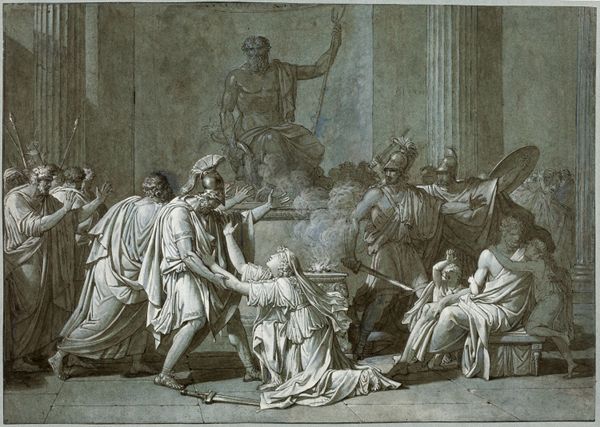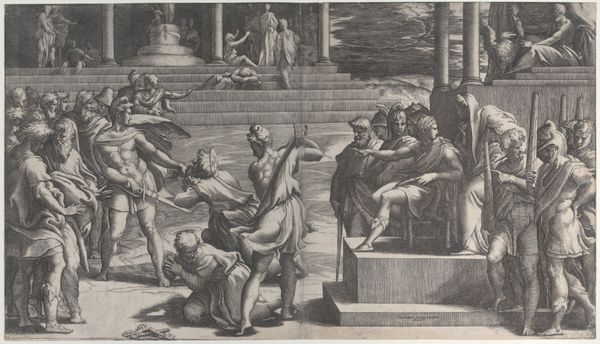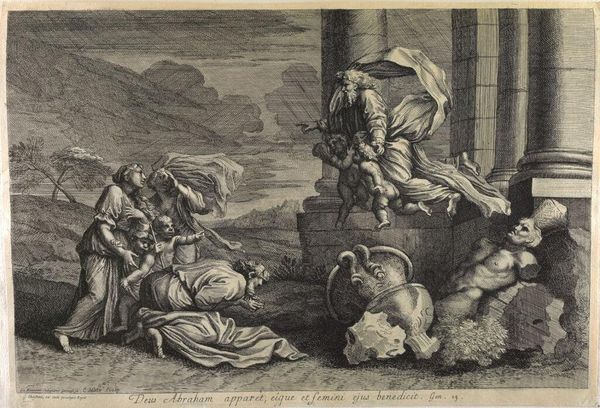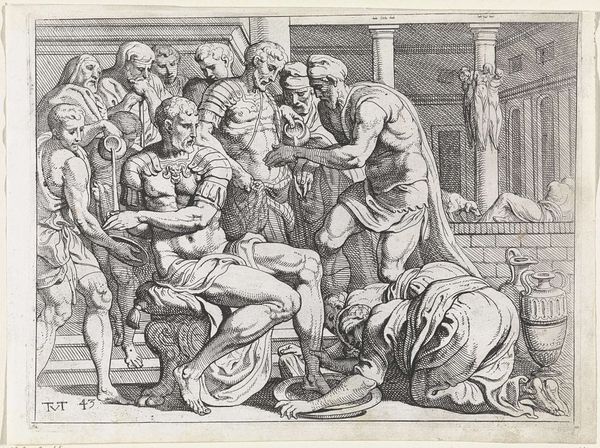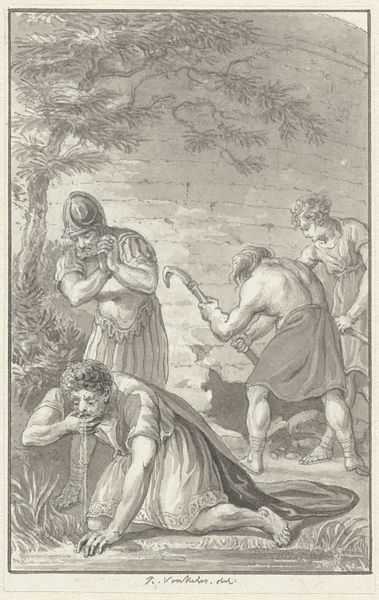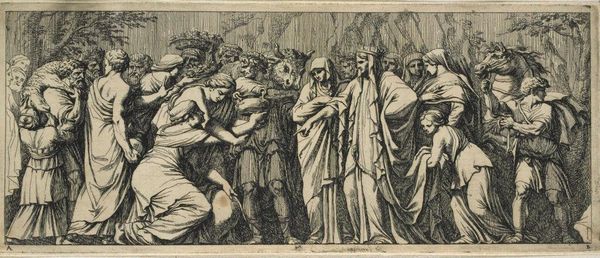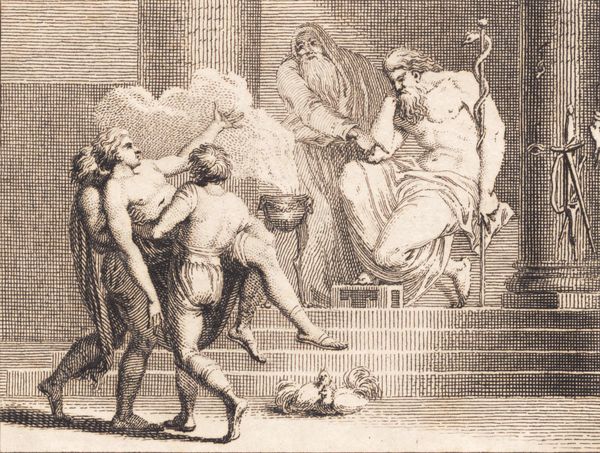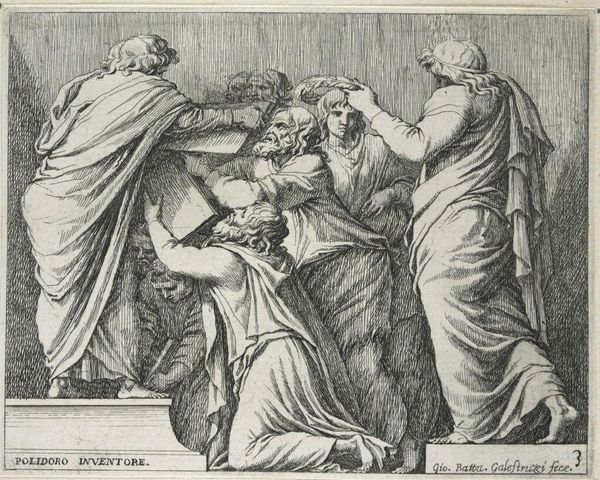
Dimensions: 413 mm (height) x 503 mm (width) (bladmaal), 382 mm (height) x 469 mm (width) (billedmaal)
Curator: This etching, created by J.F. Clemens in 1777, is titled "Tobias Lader I Pestens Tid De Døde Begrave" or "Tobias in Time of Plague Burying the Dead." It’s currently held here at the SMK, the National Gallery of Denmark. Editor: Wow, immediately I'm struck by how unsettlingly graceful it is, even amidst the grim reality it depicts. It's like watching a tragedy unfold in slow motion, but through a veil of neoclassical idealism. Curator: That sense of slow motion, I think, stems from the artist's masterful use of classical symbolism. Note the pallid light, echoing ancient notions of death, coupled with the figures’ idealized, almost god-like musculature. This contrast isn’t accidental. Editor: Right, it almost feels like these figures are enacting a sacred ritual rather than performing the grim task of burying plague victims. There's something deeply troubling, yet undeniably beautiful, about the detached precision of their actions. Like they've ascended beyond the earthly squalor. Curator: Indeed, that removal can be attributed, in part, to the figure of Tobias himself. Within Jewish folklore, the character of Tobias is revered as an emblem of faith, fortitude, and grace amidst affliction. Clemens invokes the imagery associated with divine favor, presenting Tobias as a benevolent shepherd amidst desolation. Editor: That adds another layer, doesn't it? We’re not simply looking at a scene of horror, but a testament to unwavering compassion, of actively performing a 'good deed'. The kind of archetypal moment of selflessness humanity keeps looking to during disasters, so that it is easier to deal with tragedy. But then again, maybe, because it is stylized, it just distances us more? Curator: I believe Clemens masterfully walks a thin line, encouraging the viewer to contemplate the dichotomy inherent within mortality – its capacity for devastation juxtaposed with its innate invitation to exhibit humanity. Even those stoic figures behind, whispering as they gaze... The epidemic is like an emotional prompt; it is there to highlight virtues. Editor: Ultimately, a dance of darkness and light, I suppose. A poignant exploration of both the fragility and resilience of the human spirit when confronted with the brutal realities of existence. It's pretty bleak, in short, but strangely reassuring too. Curator: An image as complex as the symbology of its titular character – capable of both wounding and healing, I find it remains as pertinent now as when Clemens put quill to plate.
Comments
No comments
Be the first to comment and join the conversation on the ultimate creative platform.
